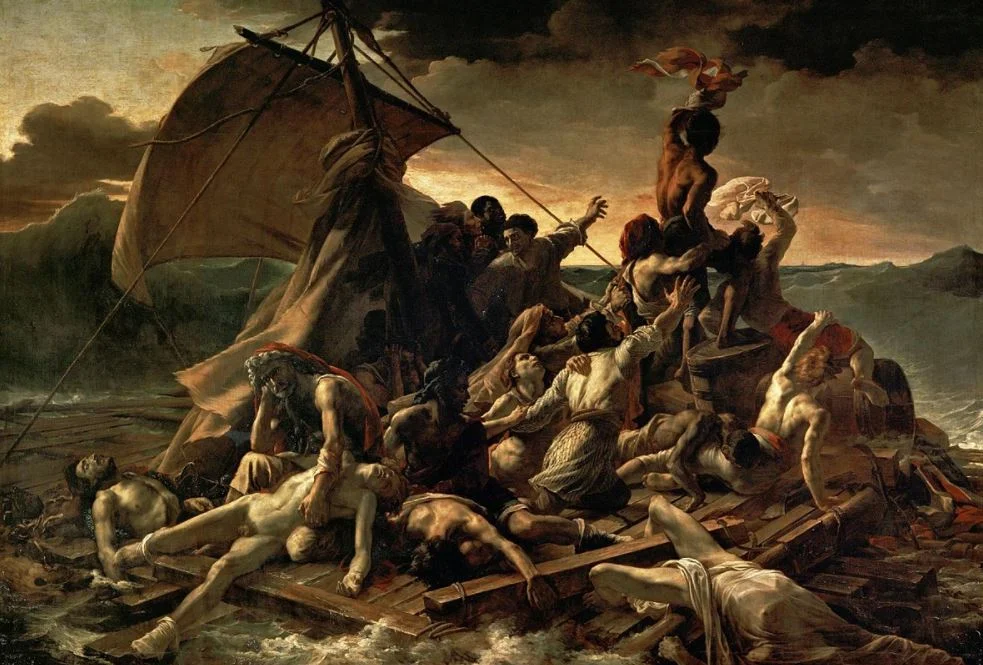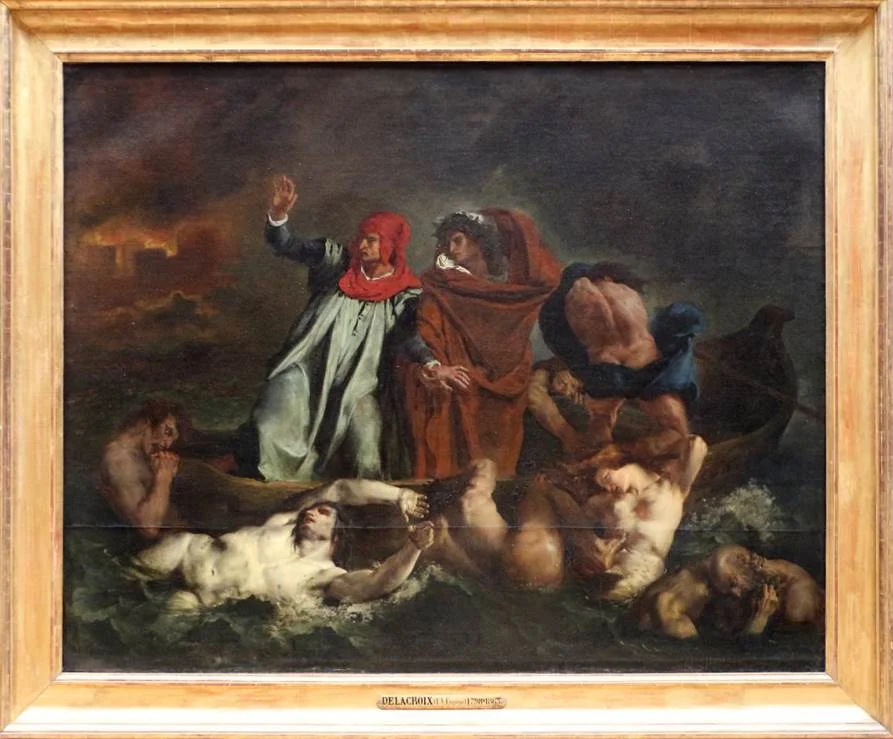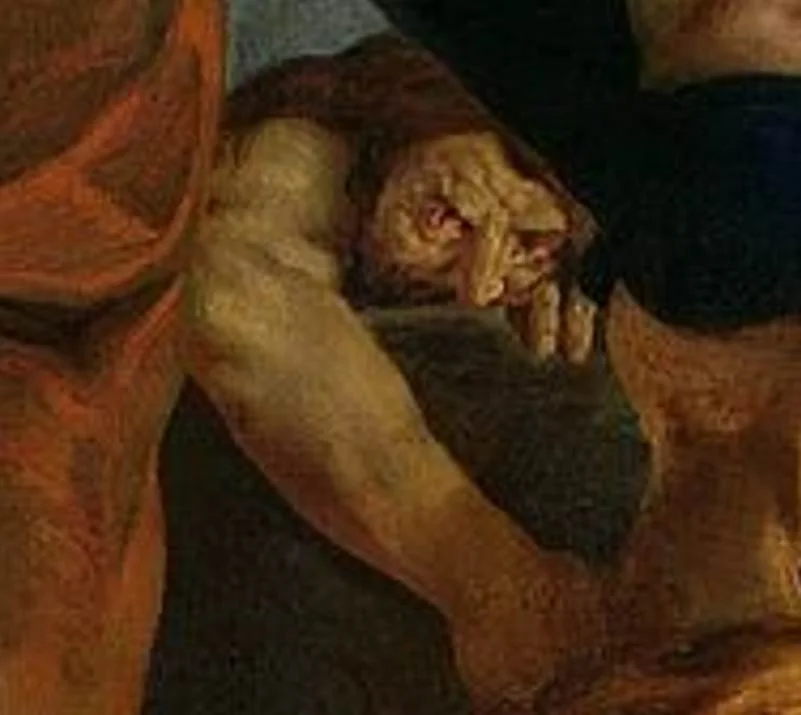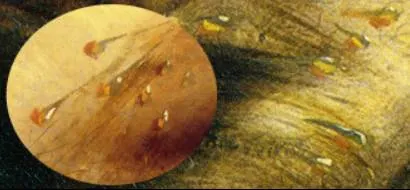It’s hard to deny the fact that renowned 19th-century painter Eugène Delacroix (1798-1863) had a big stake in the transition from the ideals of the Neoclassical artists to those of the artists of the Romantic School.
This is exemplified by the first painting of significant importance by the artist known as “The Barque of Dante,” a painting also known as “Dante and Virgil in Hell.”
Let’s take a closer look at some of the most interesting facts about Delacroix’s masterpiece so you can learn exactly why this was one of the most inspiring works of art in this period in history.
1. It was painted during the early 1820s
Eugène Delacroix was born in 1798 which means that he was in his early twenties when he completed this influential masterpiece. He started painting this work in early 1822 with just 1 goal in mind, which was to get it accepted for the “Salon of 1822.”
This exhibition was one of the most prominent art events in the world at the time and one of the best ways for a young artist to gain recognition. It was the main event of the prestigious Académie des Beaux-Arts in Paris.
That’s the exact reason why he worked non-stop for 2 and half months to get the work ready and it was completed by April 1822, right in time for the Salon to which it was accepted.

2. It depicts a particular scene from a 14th-century poem
The Barque of Dante depicts a scene described in the famous work “Inferno” by Dante Alighieri (1265-1321), a renowned 14th-century Italian writer and poet.
We can see Dante being taken from the blazing City of the Dead across the River Styx, the river that connects Earth to the underworld. The souls of the damned are clutching onto the boat which appears to be having a hard time moving forward because of the strong wind.
Dante, who is wearing a red hood, is accompanied by Virgil, a famous poet from Classical Antiquity. He appears to be frightened and comforted by Virgil.

Phlegyas, the king of the Lapiths in ancient Greece, is steering the boat across the wild river, a seemingly complicated task.
3. Delacroix was greatly inspired by a work he once posed for
Even though Delacroix is today considered to be the leader of the French Romantic School, he was greatly inspired by the main pioneer of the movement named Théodore Géricault (1791-1824).
Unfortunately, this talented artist died at a young age from complications related to Tuberculosis. He still radically changed the world of art and more specifically with a painting called “The Raft of the Medusa” (1818-1819).
What’s remarkable is that this not only formed the inspiration for Delacroix’s work described in this article but that he also posed for it. After all, the two artists were colleagues and friends as well.
The young Delacroix can be seen lying in the front with his face down and arm stretched out.

4. It received mixed reviews at the Salon of 1822
The young artist was delighted that his work was accepted for the prestigious Salon of 1822. This didn’t automatically mean, however, that everybody was equally delighted with the result.
It’s fair to conclude that the critical reception of the painting was rather mixed. That’s quite understandable because it completely steered away from the mathematical precision in which Neoclassical artists painted works. After all, this style had been extremely popular for multiple decades in France by then.
Some critics admired the use of color by Delacroix and compared it to the works of Peter Paul Rubens, the famous Baroque artist of the 17th century. Others disliked it and described the painting as “a real daub” (“Une vraie tartouillade”), which means a painting executed without too much skill.
Regardless of this, Delacroix remained consistent and went on to transform the world of art in the following decades, and this remarkable work clearly set the tone for his future works.
5. The painting was purchased by the French State for a handsome sum
Being accepted for the Salon in Paris was a great achievement. Finding out that the French State was about to purchase your work must have sounded even better
That’s exactly what happened though, because the French State bought the work for 2,000 francs, quite a lot of money back then.
He didn’t have to wait too long as well because, by the summer of 1822, the work was decorating the Musée du Luxembourg, which was then housed in the east wing of the Palais du Luxembourg in central Paris.
The painting eventually ended up moving to the Louvre Museum in Paris in 1874, a location where it’s still on public display today.

More interesting facts about The Barque of Dante by Eugène Delacroix
6. Just like most of the artworks by Eugène Delacroix, this is a rather large painting. The oil on canvas work has dimensions of 189 × 246 centimeters (74 × 95 inches), a remarkable size because it was completed in just two and a half months.
It’s still much smaller than some of his most famous paintings though, including “Liberty Leading the People” (260 × 325 centimeters – 102.4 × 128.0 inches) and “The Massacre at Chios” (419 × 354 centimeters – 164 × 139 inches).
7. Delacroix like the head of the damned soul clutching onto the boat in the background as his best. That’s quite a remarkable choice, don’t you think?

8. One of the most remarkable elements in the painting is tiny drops of water rolling down the bodies of the condemned souls. These were painted in a rather unique way using 4 different types of pigments.
These colors include white, the highlighting of the water drops, green and yellow to establish the size of the drops, and red to create the shadow.
9. Just like he got the inspiration for the overall composition of the painting from “The Raft of the Medusa,” he got the inspiration for these water drops from another famous work of art.

The same drops can be seen rolling down the bodies of the sea nymphs clutching on the vessel of “The Landing of Marie de’ Medici at Marseilles.”
This is one of the paintings of the so-called “Marie de’ Medici Cycle” commissioned from Peter Paul Rubens by Marie de’ Medici, the widow of King Henry IV of France.
10. Delacroix was quite literally knocked out after completing this remarkable work of art. So much that the young artist needed quite some time to recover.
Surely, the acceptance of the work at the Salon of 1822, which started on April 24 of that year, and the subsequent sale of the work made it all worthwhile.
The official title of the work at the exhibition was: “Dante et Virgile conduits par Phlégias, traversent le lac qui entoure les murailles de la ville infernale de Dité.”
This translates to “Dante and Virgil are led by Phlégias” across the lake surrounding the alls of the City of the Dead called Dité.”

